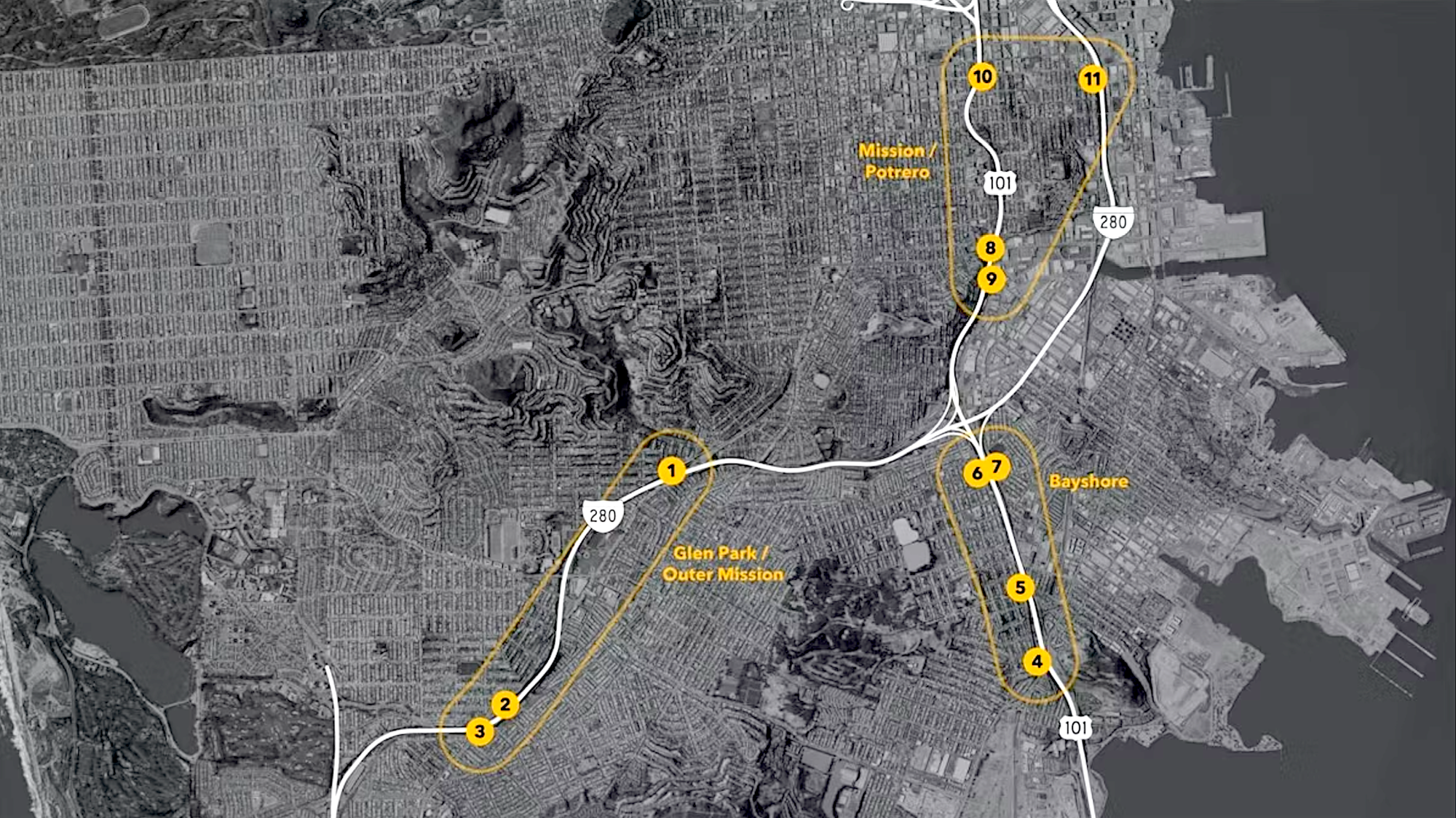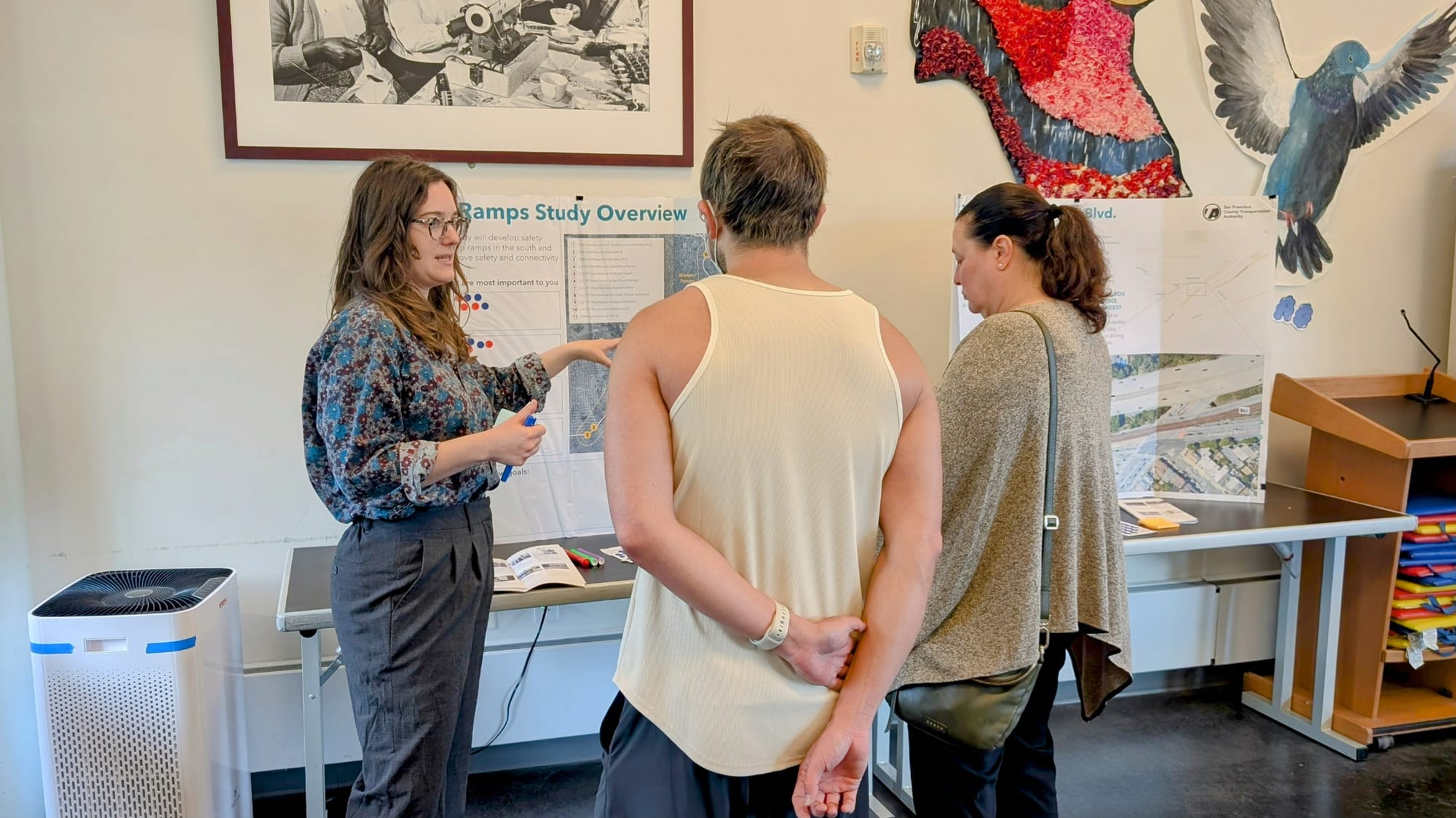🟧 Ocean Avenue's New Leader // Home-Invasion Burglary Homicide
Plus: The 1,100-unit Balboa Reservoir project officially breaks ground.
Freeway ramps at Monterey Boulevard, Alemany Boulevard and Sadowa Street are under review.

Improving safety for pedestrians and bicyclists at 11 freeway ramp intersections is the focus of a new San Francisco County Transportation Authority study.
Representatives from the transportation authority held an open house at the Ingleside Library Branch on Thursday to solicit input from the public for the Vision Zero Freeway Ramps Study, specifically focusing on a handful of neighborhood intersections.
The three freeway ramps under review include the Interstate 280 northbound and southbound ramps at Monterey Boulevard; the I-280 southbound ramp at Sadowa Street; and the I-280 northbound ramp at Alemany Boulevard. On and off ramps elsewhere in the city are also included in the project.

Andrew Lee, an engineer with the transportation authority’s contractor Parametrix, said the project’s purpose is to identify low-cost and near-term solutions.
“We're trying to find opportunities using lower-cost methods like striping pavement markings, changes to traffic signals, more traffic control signs,” Lee said.
The transportation authority spotlighted the challenges of each freeway ramp.
For instance, vehicles travel at high speeds coming from the westbound Monterey Boulevard I-280 ramp through a right turn channel. Staff said the eastbound Monterey Boulevard traffic lane shared by vehicles and bikes is not suitable for all ages and abilities.
The I-280 northbound ramp at Alemany Boulevard is challenged by bike lanes in between travel lanes, long pedestrian and bicyclist crossings and an eastbound left turn onto San Jose Avenue that causes congestion.
Wide lanes and vehicles merging onto a surface street are two challenges facing the I-280 southbound at the Sadowa Street off ramp.

“The people driving through here merge into a local street, so it makes it such that there's a lot of vehicle traffic through here,” Lee said, adding that some drivers exit the ramp at a higher rate than is comfortable when entering onto a surface street.
The treatments under consideration are quick-build tools that the city has used at dangerous intersections, such as separating bikes from vehicle traffic, shortening crosswalk distances and lengthening crosswalk times.
Staff will review traffic management options such as road diets, traffic signal upgrades and speed limit signage to slow as possible to improve traffic safety.
The transportation authority will examine and analyze feedback collected from community groups, online surveys and town halls and outreach to design draft recommendations. In the fall, staff will hold another round of outreach this winter to present the draft for public feedback, with a final report completed by early next year.
You may also give feedback through the online survey at sfcta.org/freewaysurvey.
We deliver neighborhood news, events and more every Thursday.